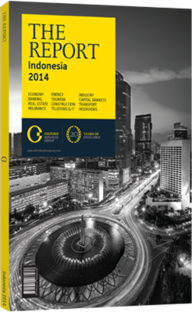Seizing momentum: Shortcomings in infrastructure supply are gradually being addressed
The government is addressing challenges relating to a lack of high-quality infrastructure by encouraging public-private partnerships (PPPs). Infrastructure investment has lagged in recent years, averaging 3-4% of GDP since 2000, well down on the 7% or more from before the Asian financial crisis in the late 1990s. While recent years have seen some spikes, notably in 2009 and 2010, when infrastructure investment averaged close to 6% of GDP, spending has again fallen back to 4%. The cost to the economy is likely significant. Insufficient infrastructure places burdens on existing businesses, which must deal with transport and logistics systems that are not equipped to handle current volumes, and communication networks that are outdated. The Indonesian Logistics Association has said the cost of logistics is equivalent to 24-27% of GDP, compared to 19-22% in other Asian countries. Inadequate infrastructure also discourages global businesses from setting up shop in Indonesia, as foreign investors seek out more favourable environments. According to a recent report by the Qatar-based QNB Group, ageing infrastructure in Indonesia is holding back GDP growth by 3-4% each year. The bank has estimated that the economy will grow at 5% per year in the 2015-18 period, below trend, due to the poor state of infrastructure.
Plans To Accelerate Investment
The government is well aware of the challenges that it faces and has proposed several plans to address infrastructural shortcomings. The National Medium -Term Development Plan 2010-14 states that infrastructure investment will be focused on meeting basic needs as well as on improving the competitiveness of Indonesian products. The central government estimated that the necessary investment over the 2010-14 period amounted to Rp1923trn ($192.3bn), with some 70% of this to come from the private sector, PPPs, local governments and state-owned enterprises (SOEs).
However, the most significant driver behind infrastructure development will be the Master Plan for the Acceleration and Expansion of Indonesian Economic Growth 2011-25, or MP3EI, issued in 2011. This augments rather than replaces existing government initiatives, such as the National Medium-Term Development Plan. It is a more focused document, and one that places particular importance on infrastructure.
The government has estimated that a total Rp4012trn ($340.12bn) will be spent on MP3EI, with Rp1786trn ($178.6bn) allocated to infrastructure. The central government is expected to account for about 10% of funding, with 18% to come from SOEs, 51% from private enterprise and 21% from PPPs. Of the 79 MP3EI projects, 32 are set to be PPPs. According to Wishnu Wardhana, chair of APEC Business Advisory Council 2013 and group CEO of Indika Energy, the biggest obstacles are legal and regulatory, as well as coordination among institutions and the central and local governments.
“We have been discussing PPP for a long time, yet progress has been limited. The public sector needs to address the regulatory environment. Infrastructure is a long-term investment, and businesses want to ensure that they will earn adequate return, and for that reason, issues such as legal certainty, risk environment and overall investment climate matter,” Wardhana told OBG. He added that many projects have been delayed, which has undermined overall confidence in the government and added to investor costs.
New Momentum
The government hopes to give the MP3EI added momentum, with the Ministry of National Development Planning and the Ministry of Economy having identified 27 priority projects intended to launch in 2014. These projects, with a combined price tag of $47.5bn and encompassing the transport, utilities and communications sectors, are set to be carried out as PPPs. This is a positive development, suggesting that the government is committed to speeding up the provision of essential infrastructure. Having said that, the roll-out of these projects is likely to be a lengthy process, and while there are significant opportunities for investors and contractors, downside factors will have to be weighed carefully during the negotiation stages.
You have reached the limit of premium articles you can view for free.
Choose from the options below to purchase print or digital editions of our Reports. You can also purchase a website subscription giving you unlimited access to all of our Reports online for 12 months.
If you have already purchased this Report or have a website subscription, please login to continue.

